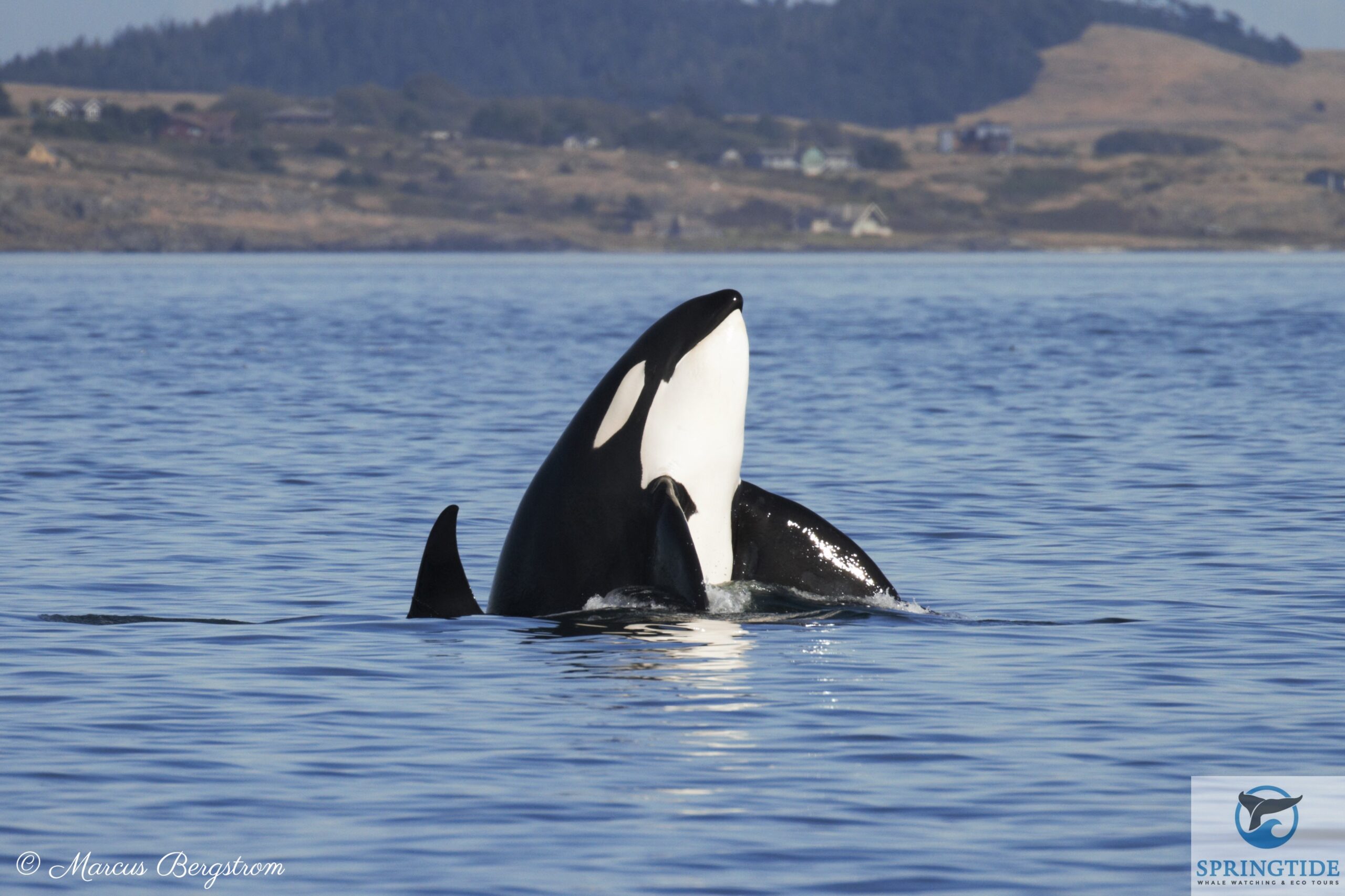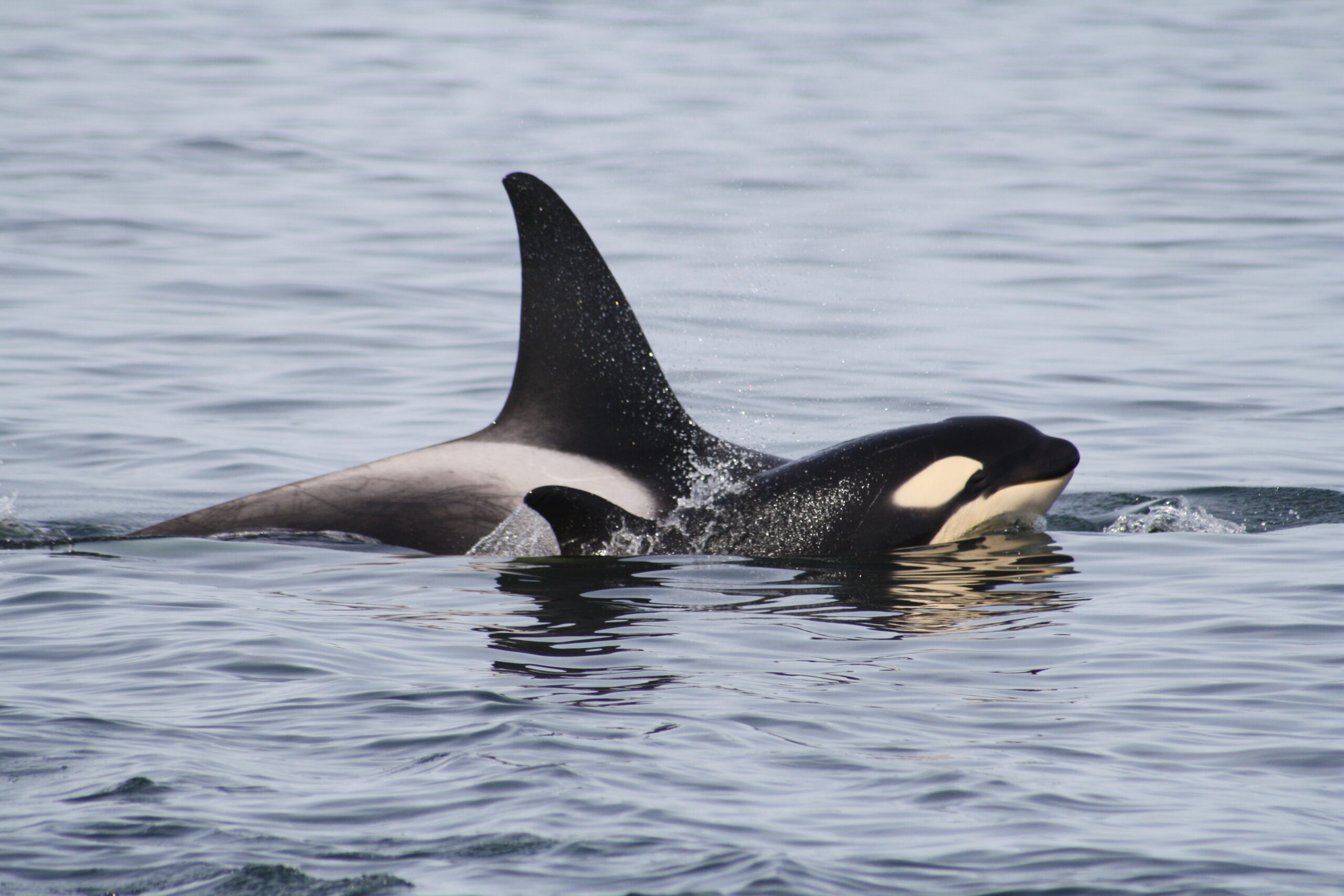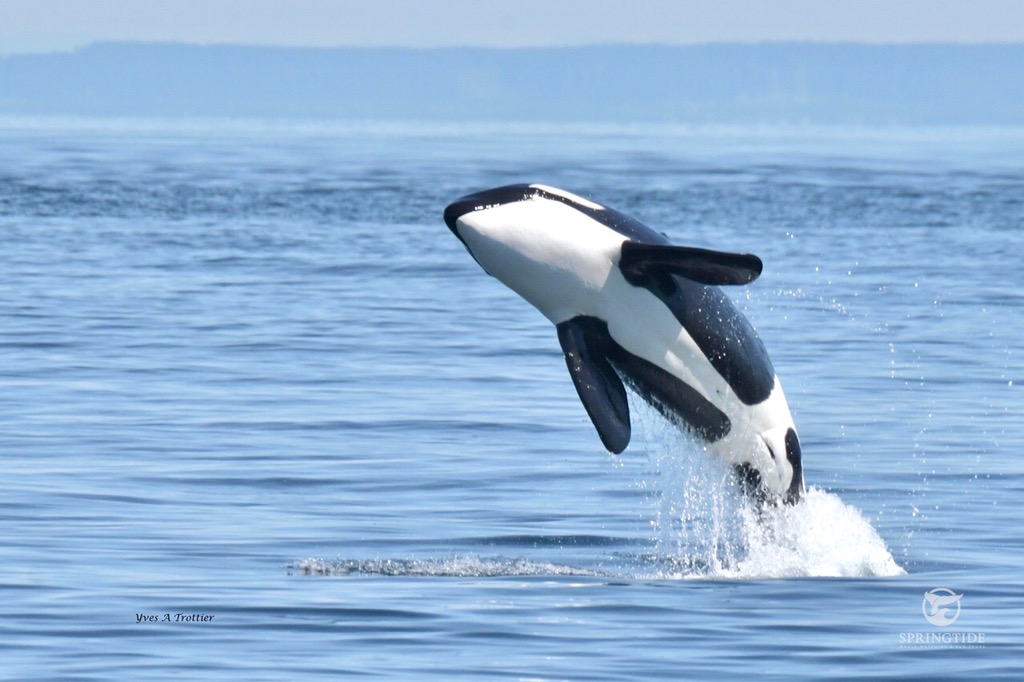Editors Note: As of September 8, 2015 there are 82 Resident Orcas, with the birth of a fifth calf!
By Christine Roper
With 81 members in the population, the Southern Resident Killers Whales are one of the most endangered orca populations in the world. Due to their extremely specific diet, and the declining chinook salmon population, these fish-eating orcas are having more and more trouble each year finding enough salmon to sustain their pods. As a result, increased malnutrition and thinning blubber layers for these whales are having devastating effects on their health.

However there is another problem for these orcas in their ocean habitat, invisible to the eye, also having a negative effect on their population. The Southern Resident Killer Whales spend approximately five to six months of the year in the Strait of Juan de Fuca, in locations close to Vancouver and Seattle. This summer range is the best spot for these orcas to find the greatest abundance of salmon to feed on. Each year, near the beginning of the summer, the chinook salmon come into the Strait of Juan de Fuca in order to get to the rivers to spawn. During this time, the Southern Resident Orcas simply follow them in, where they spend the summer feeding on this fatty species of fish. As a result of their river spawning, these salmon spend a lot of time feeding in areas close to major cities, where pollution and run-off from the land are much greater. Toxins known as polychlorinated biphenyls (PCB’s), used in transformers and electric motors, and Polychlorinated dibenzodioxins (PCDD’s), a byproduct of chemical manufacturing, are contaminating the soil around Vancouver and Seattle. The chinook salmon feeding in these rivers eat small organisms such as zooplankton which are contaminated with these toxins due to the run-off. These toxins accumulate in the fat layers of the fish, which in turn get eaten by the orcas. All of the toxins contained in the fish are then stored in the blubber layers of the orcas, a phenomenon known as bioaccumulation. Although the small amount of toxins one fish may contain wouldn’t harm an orca, after years of feeding on these salmon the amount of toxins stored in their bodies can start to cause physical harm. Pollutants such as PCB’s have been found to suppress immune systems, affect reproduction, and have even been linked to causing cancer. But the biggest problem caused by these toxins is resulting in a low survival rate for orca calves in our area.
When an orca calf is born, just like a human, it consumes milk for the first year of its life. A female orca will produce this milk using some of her blubber layer, as the milk is made up of about 30-50% fat. Unfortunately, the blubber layer a female orca uses to make her milk is the same fat layer where those toxic chemicals from the sediment are stored. As result, calves are particularly in danger of these toxins, as they are passed directly from the mother to the calf through her milk. These PCB’s, which suppress the immune system of the young orcas, can have extremely dangerous effects if the calf is not totally healthy at birth or develops an illness that it should normally be able to resist. Sadly, as a result, the survival rate of a calf in our area can be as low as 45%. In September of 2014, a new calf born into L pod, known as L120 only survived its first month of life, most likely a result of these toxins being passed on from its mother. Sadly, this is not a story uncommon to our Southern Resident Killer Whales.

Despite all of this negative news, so far our Southern Resident Orcas have been having an amazing 2015. Since December of last year, the Resident orca population has had four new additions, with three new calves born into J pod, and one into L pod. This baby boom of orcas in the past eight months is more than the population has had in the past three years combined. Furthermore, all four orcas babies are looking healthy and strong, with lots of active behaviour like learning how to breach observed in the past few months. Although they are not out of the woods quite yet (generally the first year of life is the toughest for orca calves), scientists studying the whales in our area are optimistic that so far all four babies are doing well. This addition to the population is also complimented by the fact that no killer whales in the Southern Resident orca population have died this year, increasing their number from 77 in 2014 to 81 in 2015. While this population has a lot of obstacles to overcome before we can be confident that they will survive in the long run, so far 2015 has been a positive year for our favourite fish-eating killer whales.

